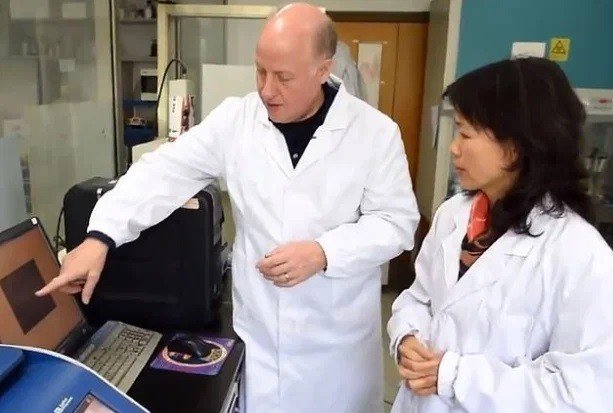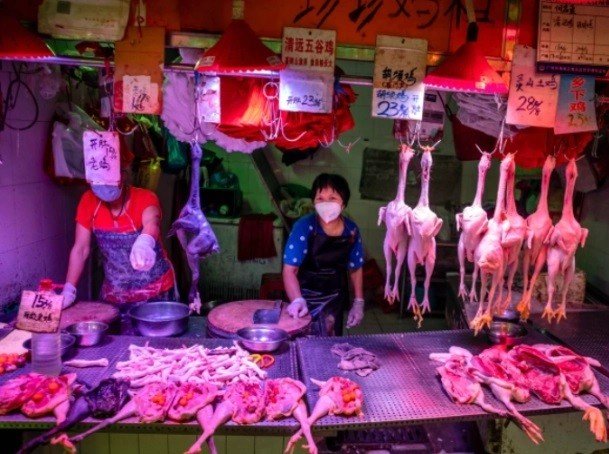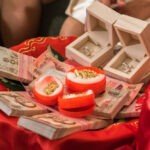WORLD Health Organisation expert investigating the origins of Covid says his team has uncovered “important clues” about a Wuhan seafood market’s role in the pandemic.
Zoologist Peter Daszak revealed the 14-member group had worked with experts in China and visited key hotspots and research centers to uncover “some real clues about what happened”.
And the US-based Brit expert added his trip to the Huanan market in central Wuhan proved particularly useful and showed signs of people leaving in a “hurry.”
He added that evidence has been found about the origins of the virus and is now being “pieced together.”
The team is trying to work out what sparked the pandemic – which has so far killed more than two million across the world – and is due to report its findings later this week.
The WHO was first asked back in May to help “identify the zoonotic source of the virus and the route of introduction to the human population.”

The so-called wet market sold mostly seafood and meat from freshly prepared wildlife and was in the spotlight at the start of the outbreak as workers there were said to be among the first infected.
“We really have to cover the whole gamut of key lines of investigation,” Daszak told Bloomberg.
“To be fair to our hosts here in China, they’ve been doing the same for the last few months. They’ve been working behind the scenes, digging up the information, looking at it and getting it ready.”
Last week, the expert admitted the origins of the Covid pandemic could have leaked from a lab in Wuhan despite previously dismissing the theory as “pure baloney”.
Investigators have also found “important clues” about the market’s role, according to Daszak.
While the food market was shuttered almost immediately after the first cases were recognised, “it’s still pretty intact,” he revealed.
“People left in a hurry and they left equipment, they left utensils, they left evidence of what was going on, and that’s what we looked at.”
He added: “We are still piecing together evidence, so we are looking at the animal evidence, what was sold on the market and where did it come from, what types of animals are they.”
Daszak told CNN his team had submitted a list of places to visit and people to speak to, receiving no opposition from the Chinese authorities.
He said: “We are not running rogue here, we are talking to our hosts. We are in a foreign country, we are guests of China right now.
“This is a good, collaborative, scientific approach to understanding more about the origins of Covid.
“Every place we asked to see, everyone we wanted to meet. … So really good.”
Daszak said the team has now concluded site visits and will spend the next few days trawling through data before presenting a summary of their findings at a news briefing prior to their departure on Wednesday.
“I can’t really say too much about what we’ve found yet because were at that exact point in time where the teams are coming together looking at different pathways,” different issues, he said.
He said questions include what were the first cases, what was the link with animals and what, if any, was the role of the so-called cold chain the possibility the virus was brought into China on packaging from imported frozen food, an unproven theory that China has long put forward.
“And of course, were looking at every hypotheses that’s been out there and seeing where the data take us and do they point to any particular one,” Daszak said.
The visit by the WHO team took months to negotiate after China only agreed to it amid massive international pressure at the World Health Assembly meeting last May.
Daszak said the team was also given wide access when visiting hospitals that treated patients in the initial outbreak at the end of 2019 and beginning of 2020.
“To meet the first clinicians who took in the first patients with COVID, that’s incredible … that you can talk to that person who dealt with that first case and ask her what she saw and ask questions,” he said.
“The same level of access was given at the Huanan Seafood Market that was linked to early case clusters, he said.
“That included meeting with vendors and market managers and touring the market with those who did the original environmental swabbing that produced signs of the virus even after the market had been closed down.
So this is an in-depth, deep understanding of the sites and the people who were involved.”
Daszak said the investigation by the team, composed of experts from 10 nations, was simply an initial step and that it would likely take years to confirm the origins of the virus.
Exhaustive research is needed to pin down an outbreaks animal reservoir, including taking animal samples, genetic analysis and epidemiological studies.
sunit




